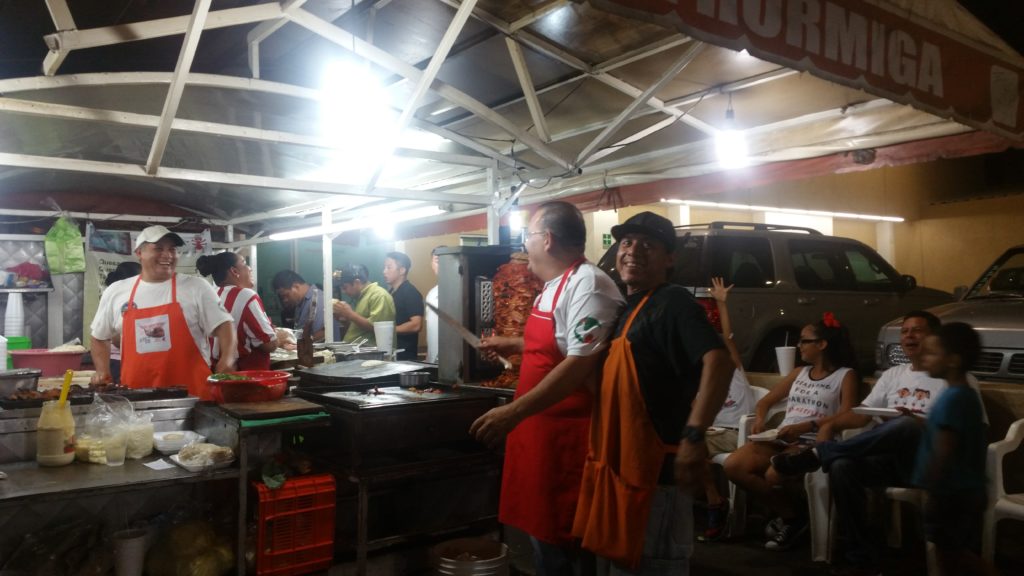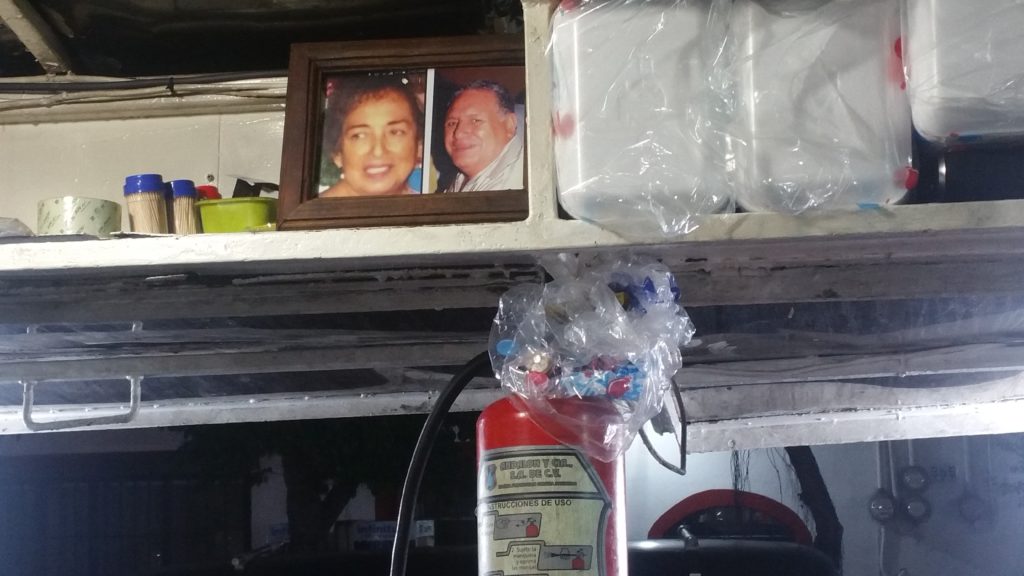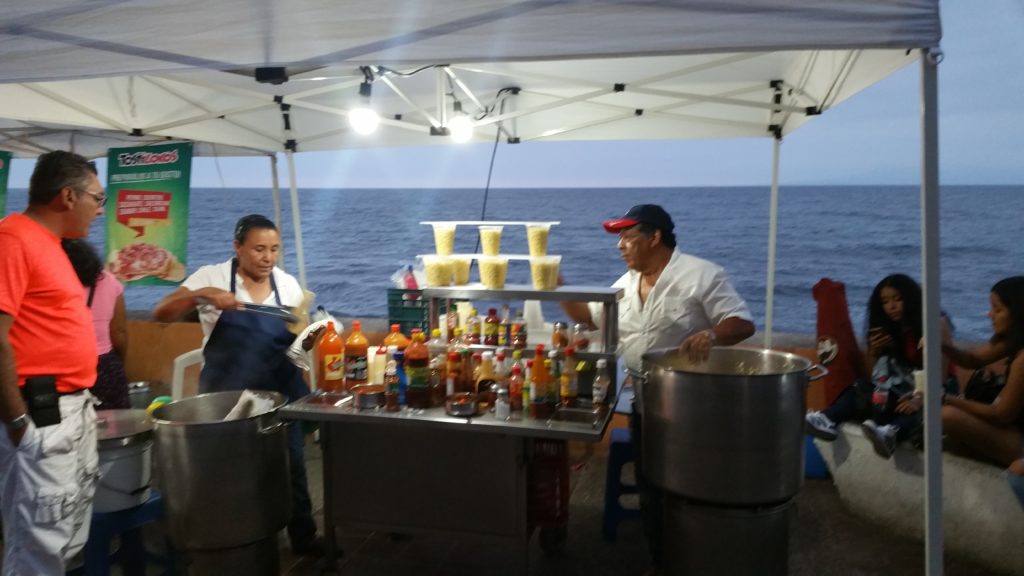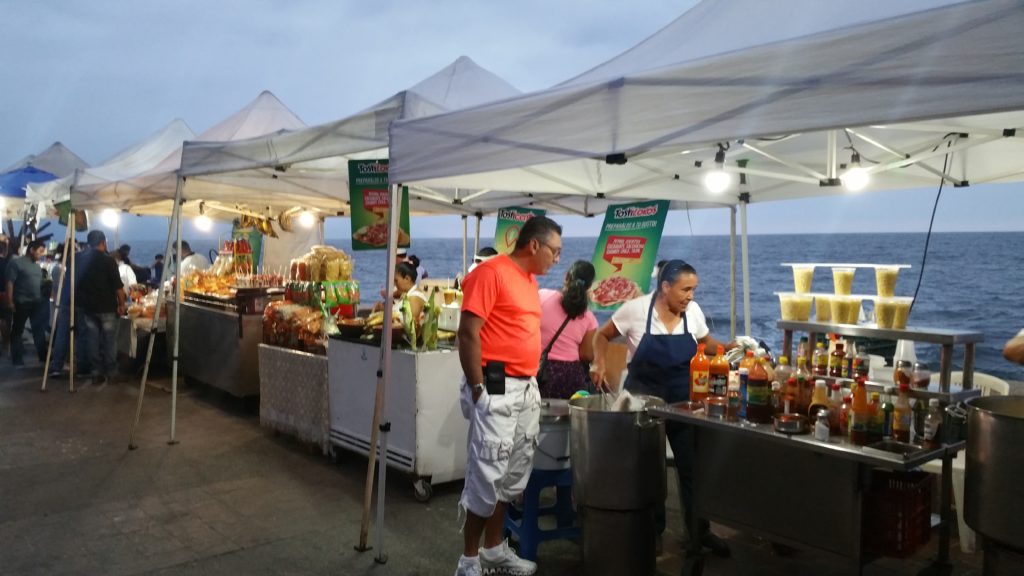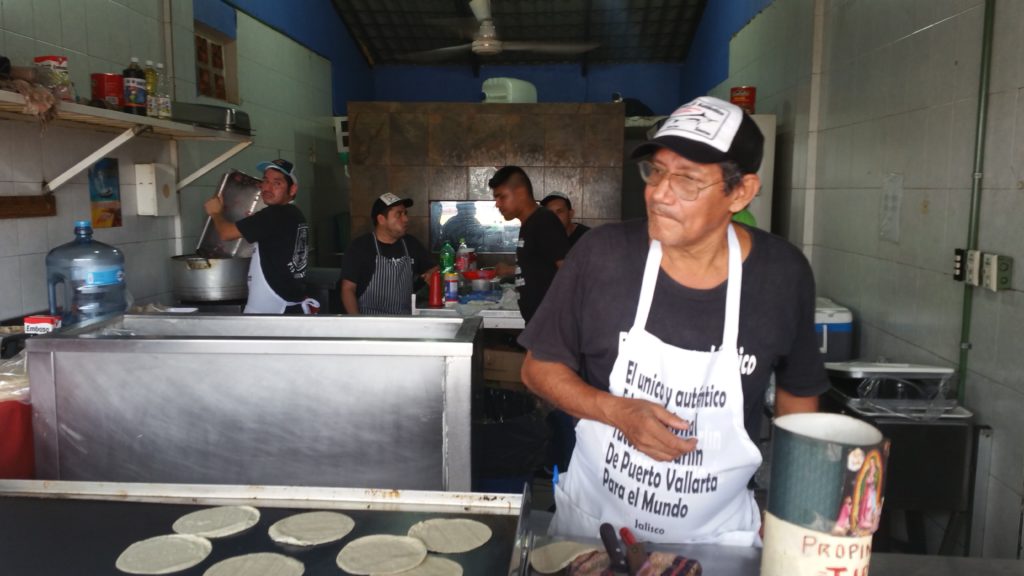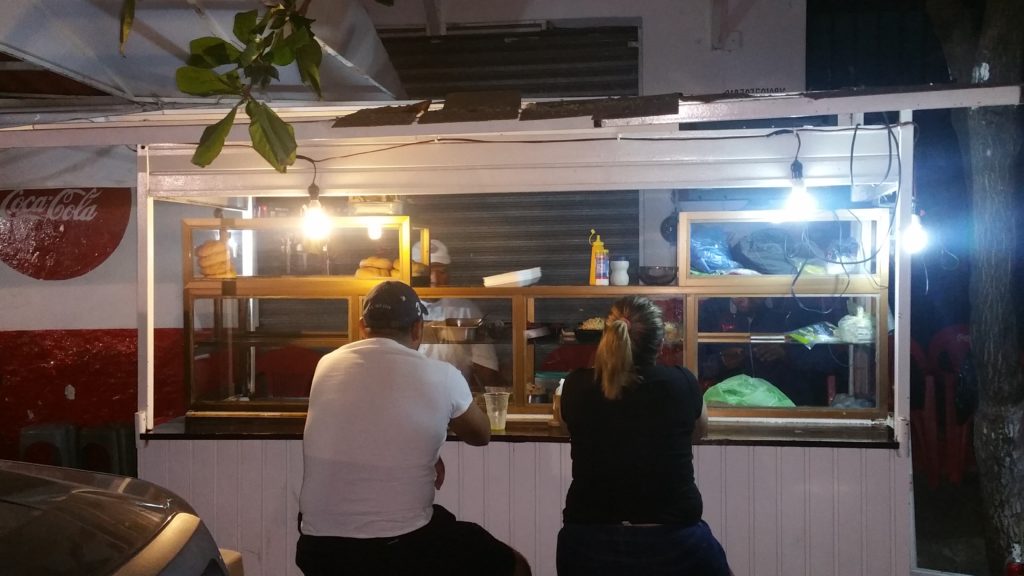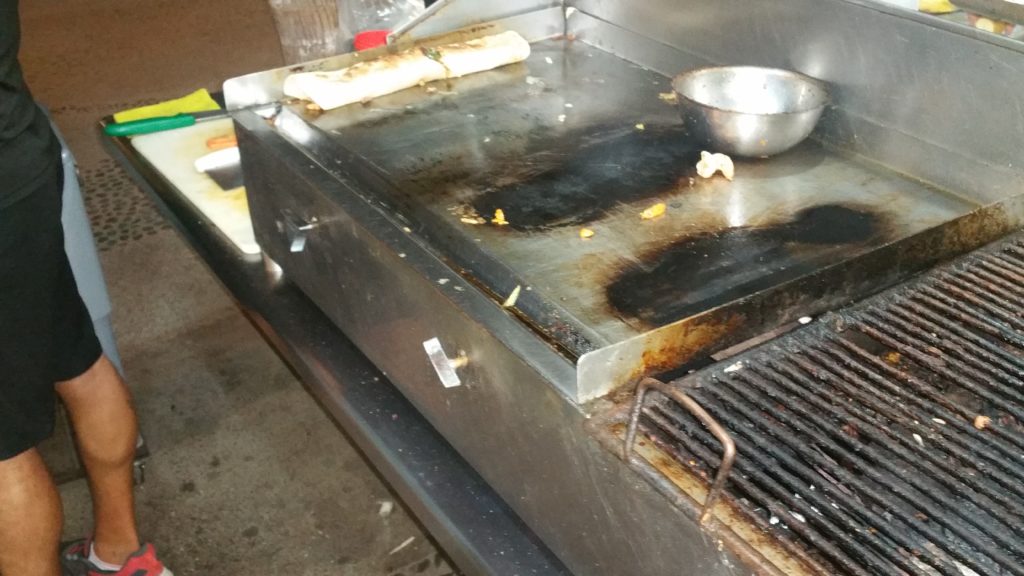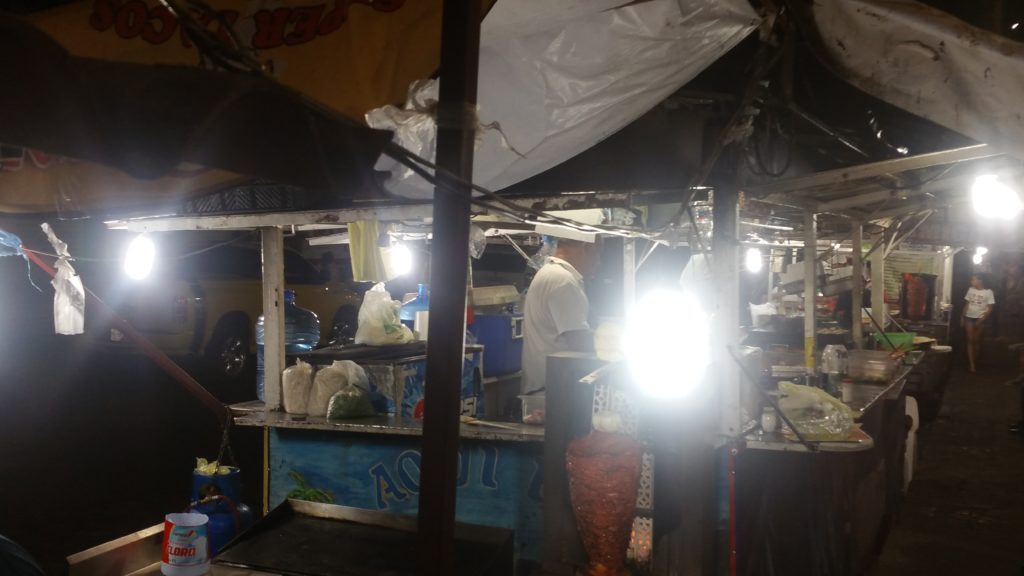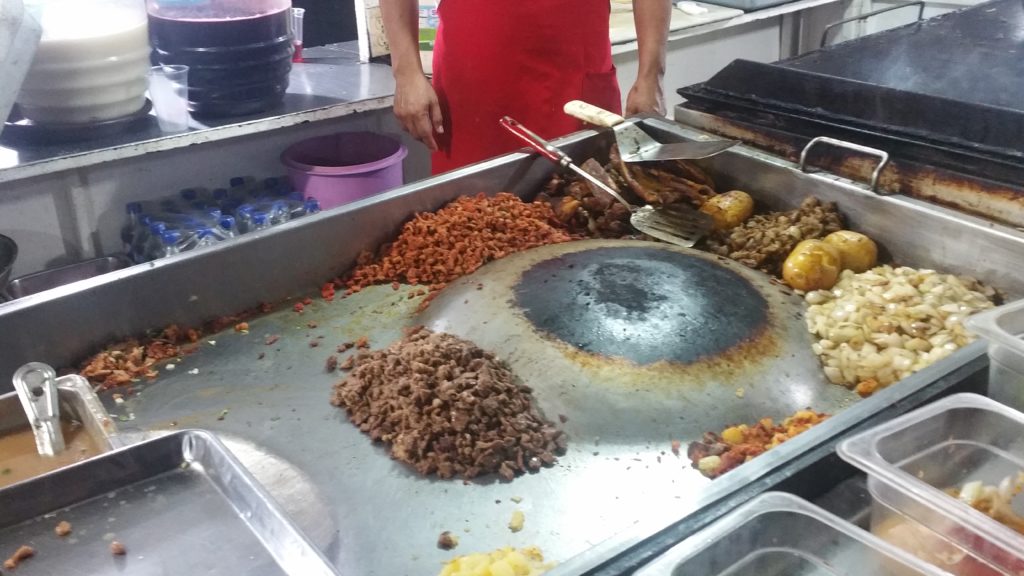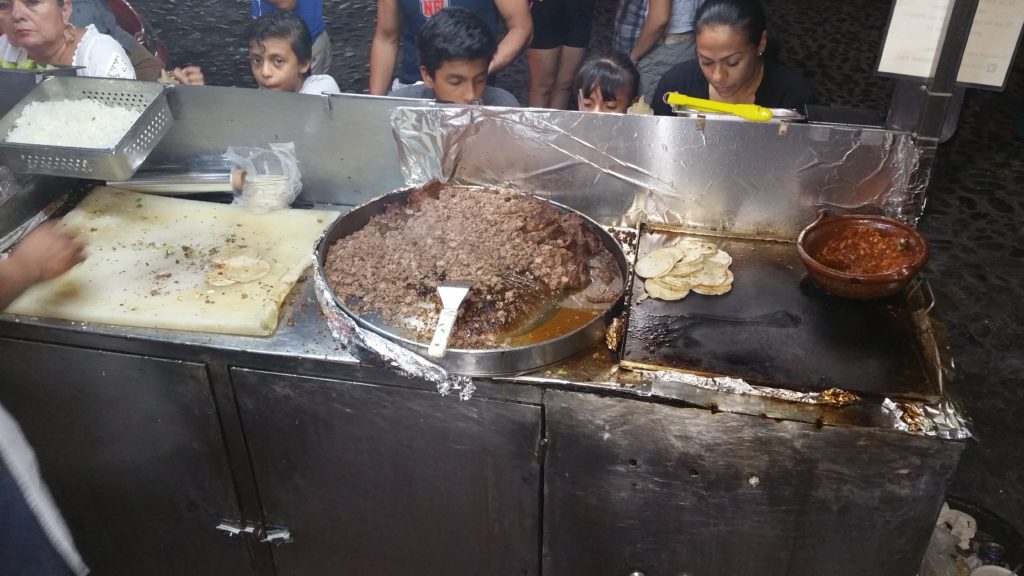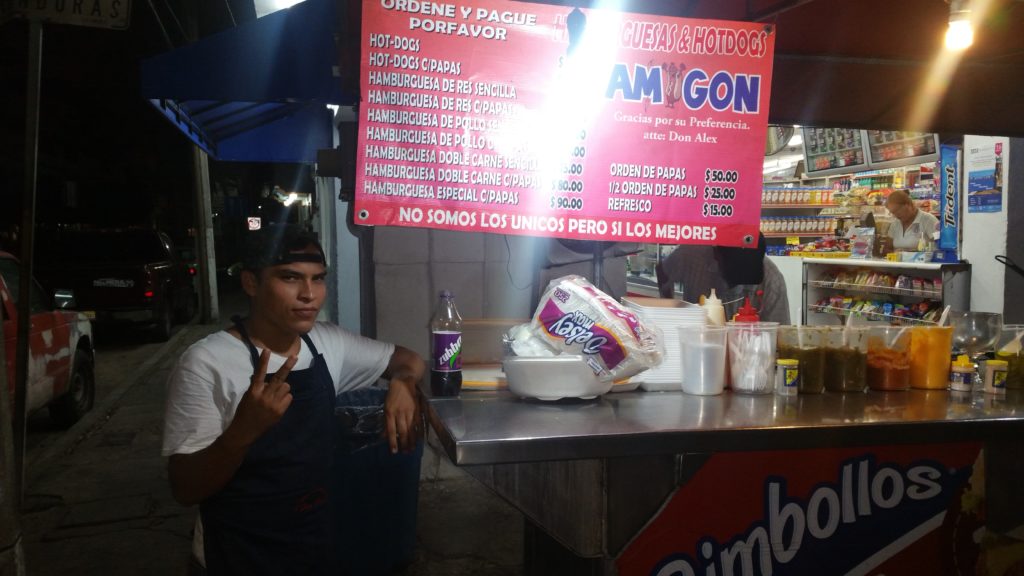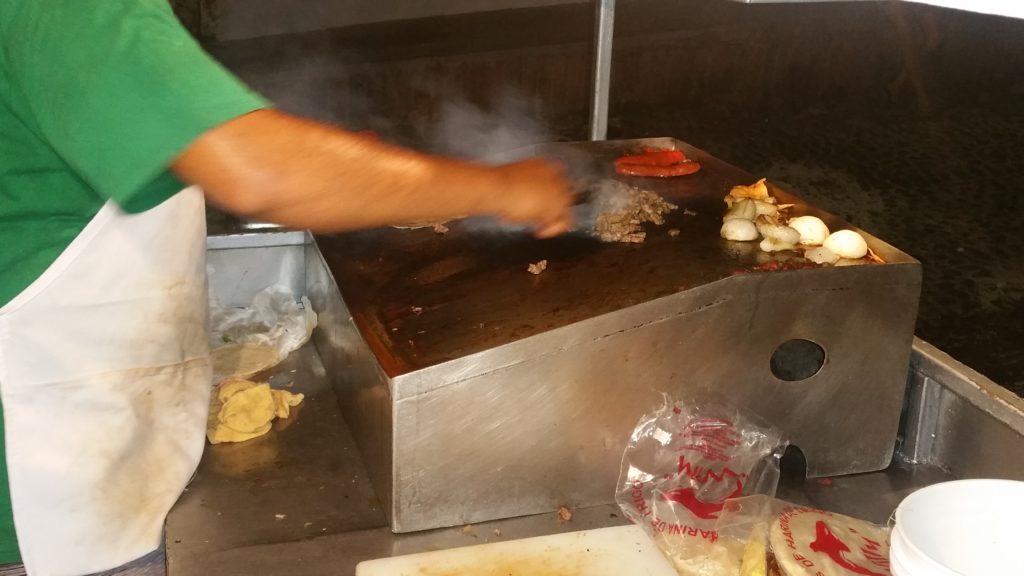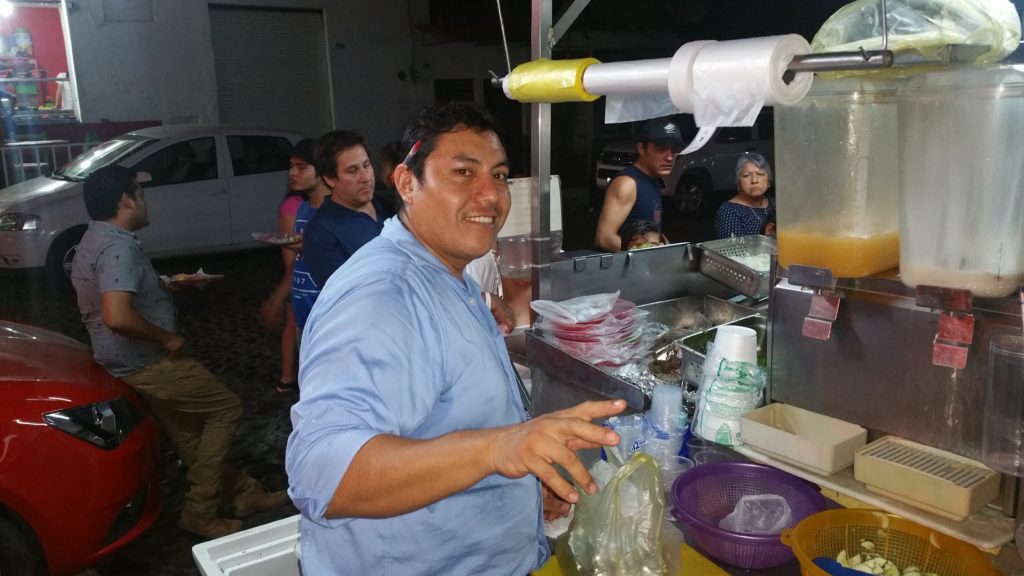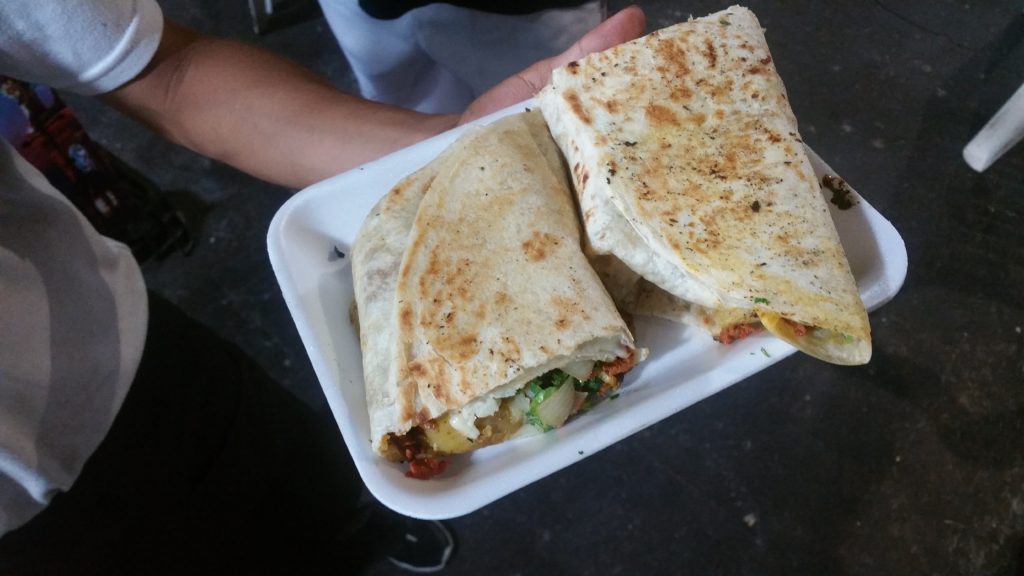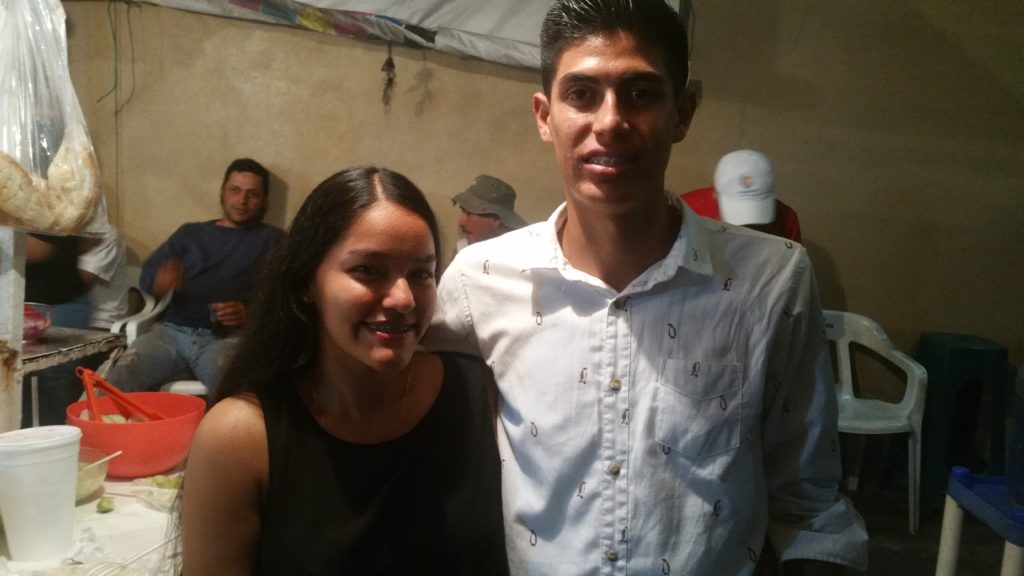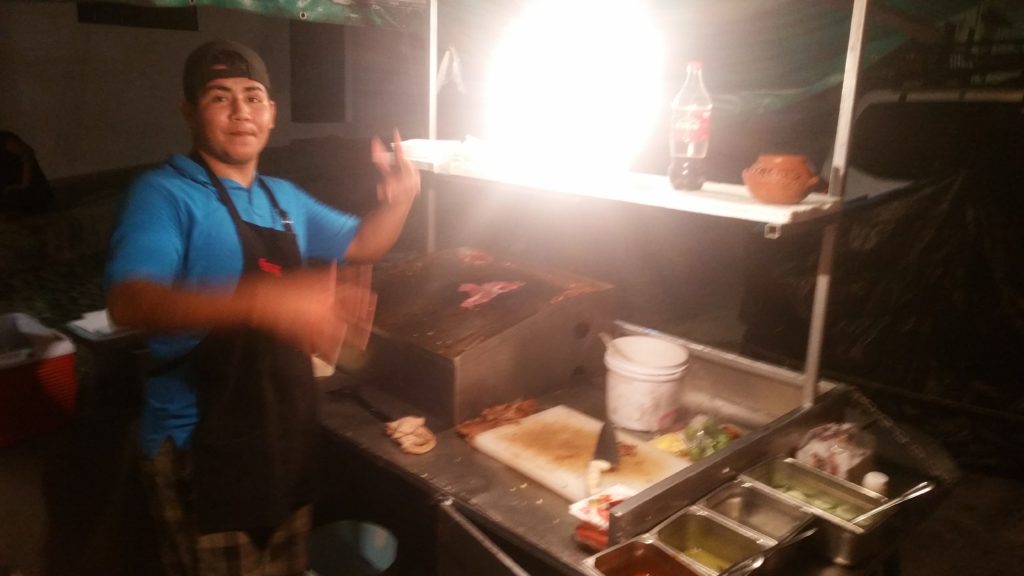Is it Safe to Eat From Taco Stands in Puerto Vallarta, Mexico?
How do you Choose a Good Taco Stand in Puerto Vallarta?
How do you know what to order at a taquerilla?
We Visit Many Local Taquerias in Puerto Vallarta, and ask How long have they been in business.
Listen to The Podcast
Hello fellow travelers, welcome this episode of the Puerto Vallarta Travel show. I am your host Barry Kessler and I am just so happy to be introducing you to my favorite vacation destination, and maybe even yours, Puerto Vallarta Mexico.
That music you were just listening to is performed by Alberto Perez, the owner of the La Palapa Group of Restaurants. Those are La Palapa, Puerto Vallarta’s Oldest Restaurant on the famous Los Muertos
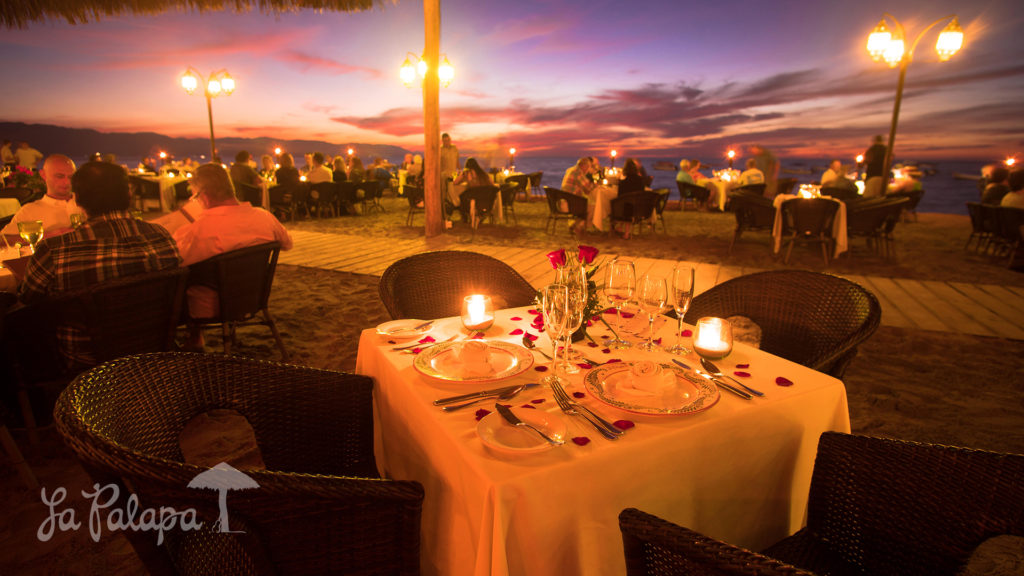
Beach, and The El Dorado Restaurant and Beach Club right next door so you can enjoy that fantastic view of the Los Muertos Pier all lit up at night in beautiful colors, or during the day in its grand splendor for breakfast, lunch or dinner, seated with our toes in the sand right at the water’s edge. It’s so romantic, it’s so, Puerto Vallarta my friends.
Subscribe in Apple Podcasts & iTunes & Leave a Good Review
Subscribe On Android Devices
Send Barry an Email
This week we are going on a tour of some of my favorite taco stands in Puerto Vallarta, It’s Taqueria Night, Taco stand night on The Puerto Vallarta travel Show but before we get to all that deliciousness, let’s see what’s happening this week in Puerto Vallarta, the 16th of April, 2019.
Demonstrations in Boca de Tomatlan Over a Proposed Hydroelectric Dam
I wish I didn’t have to start the show on a sour note, bit there is a planned demonstration down in Boca de Tomatlan this morning regarding the topic we talked about a couple of weeks ago, we are always ahead of the curve on The Puerto Vallarta Travel Show, you will remember we talked about the planned
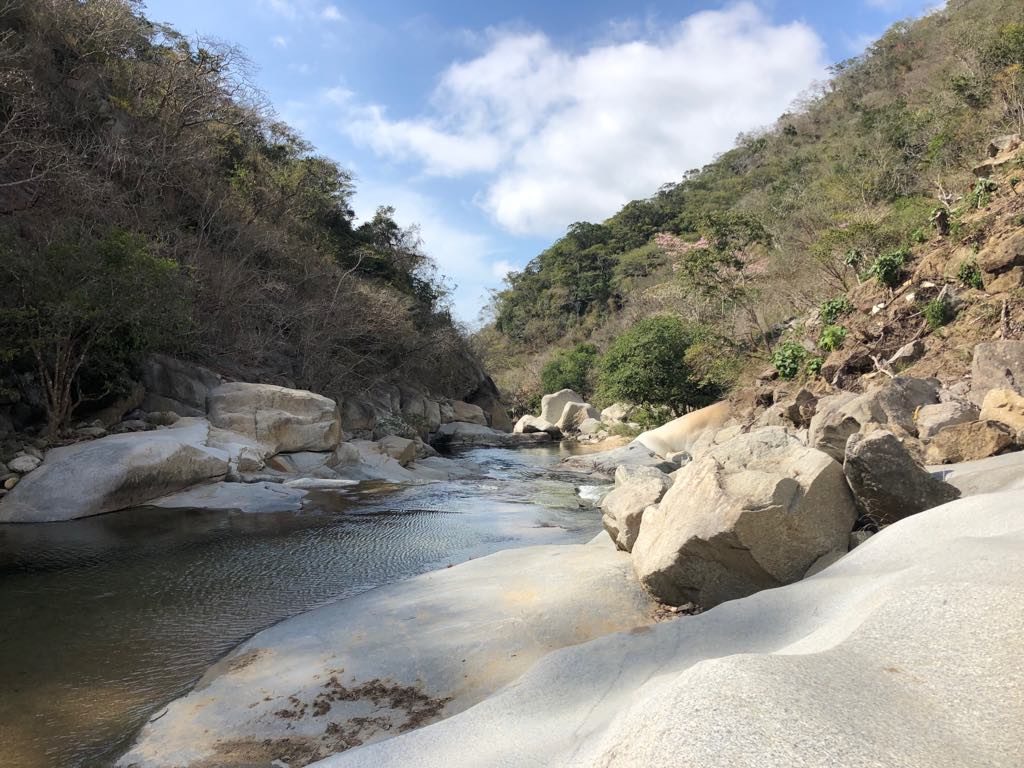
building of a hydroelectric dam on the Rio Horcones. Well, things are getting ugly. There was a big demonstration Tuesday the 8th and again this morning the 16th, beginning at 8:30 and the demonstrators plan to block highway 200 the Carretera so if you have plans to go down to Boca, and beyond today, reconsider, unless you are joining in the demonstration, stay home. And if you do plan to demonstrate, remember you are a guest in a foreign country, unless of course, you actually are Mexican.
Destruction of the Río Los Horcones Canyon Narrowly Averted—For Now
I have a lot to say about this situation. I have many friends in the Boca de Tomatlan area who are not very happy, and next week, we will lay it all out for you, and hopefully get some involvement to turn the tide. It’s very dire you guys, it really is, and like I said, next week, I will lay it all out for you.
I have a video of last Tuesday’s demonstration, and a link to the Vallarta Tribune Story in the shownotes.
Semana Santa, Easter and Pasqua in Puerto Vallarta
We are currently in the midst of a two-week holiday consisting of Semana Santa (The Holy Week, which began on Palm Sunday and it ends Easter Saturday) and Pascua (Starting with Easter Sunday and ending the following Saturday).
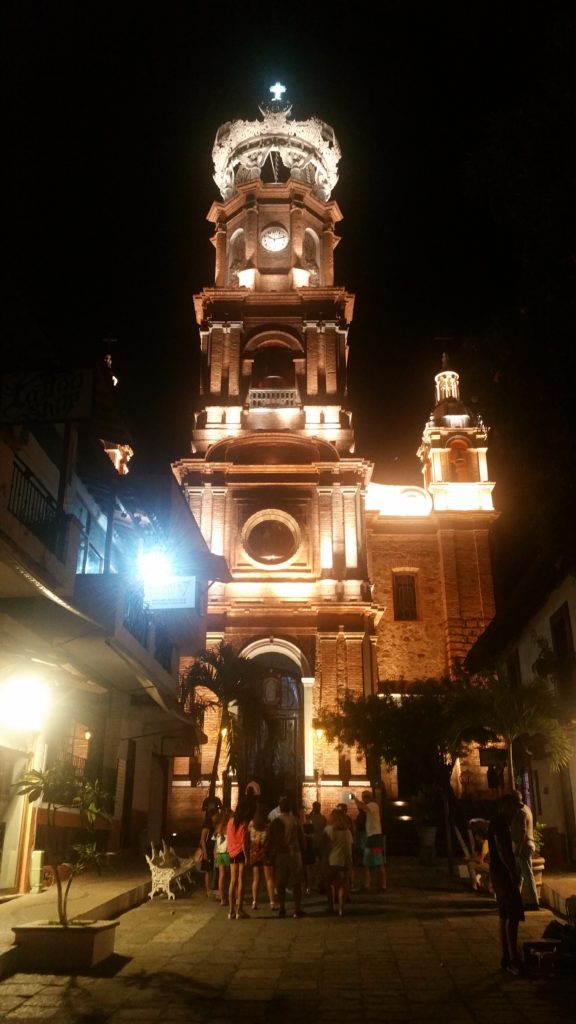
As I have mentioned before, Semana Santa is without a doubt, the most important holiday in Mexican culture.
All over Mexico, Mexicans celebrate the last days of Christ during Holy Week with elaborate processions, ceremonies, and rituals. Most of the larger Semana Santa celebrations include a dramatic reenactment of the capture, the trial, and the crucifixion of Jesus.
Mexicans have been known to practice acts of physical torture, public displays of political/social ridicule, and displays of resolutions and commitment. And you may see some of that in Vallarta. Maybe.
What is Pasqua
So, what is Pasqua? Well I have an answer from Thought.com,
History of the Word Pascua
The word Pascua, derived from the Hebrew word pesah, and the English cognate or related word, “paschal,” both refer to the Jewish Passover, a commemoration of the Israelites’ liberation or Exodus from slavery in ancient Egypt more than 3,300 years ago.
Over the centuries, Pascua came to refer to various Christian festival days in general, such as Easter; Christmas; Epiphany, which was the appearance of the Magi traditionally celebrated January 6; and Pentecost, commemorating the dramatic appearance of the Holy Spirit to the early Christians, a day observed seven Sundays after Easter. Whitsun, Whitsunday, or Whitsuntide is the name used in Britain, Ireland and among Anglicans throughout the world, for the Christian festival of Pentecost. In many Spanish-speaking countries, Epiphany is the day when presents are opened, rather than on Christmas.
Although the English term Easter most likely comes from Ēastre, the name given to a goddess celebrated in the spring equinox, in many other languages the term used to designate Easter, the Christian holiday, shares the derivation of the Jewish name for Passover.
The origin of this is that both celebrations occur in the same period and both celebrate a rite of passage, the Jews to the Promised Land and the change from winter to spring.
Use of the Word Pascua Now
Pascua can stand alone to mean any of the Christian holy days or Passover when the context makes its meaning clear.
Often, however, the term Pascua judía is used to refer to Passover and Pascua de Resurrección refers to Easter.
In plural form, Pascuas often refers to the time from Christmas to Epiphany. The phrase “en Pascua” is often used to refer to Easter time or Holy Week, known in Spanish as the Santa Semana, the eight days that begins with Palm Sunday and ends on Easter.
So, you are now properly schooled in the many meanings of Pasqua. Overly schooled I’m afraid. Sorry about that. And if you haven’e had enough, I have a link to that information in the show notes.
https://www.thoughtco.com/the-many-meanings-of-pascua-3079203
Origins of The Taco and Taco Stand or Taqueria in Mexico
Where Did the Taco Come From?
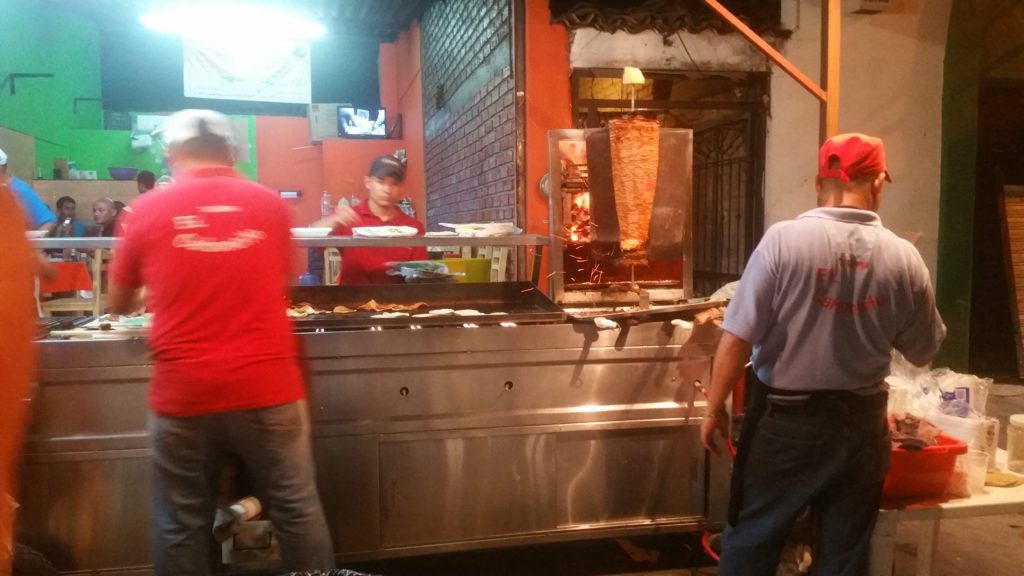
From an Article in Smithsonian.com
Mexican silver miners likely invented the taco, Mexican Americans in the Southwest reinvented it, and Glen Bell mass-marketed it via the crunchy Taco Bell shell. (Corbis)
By Katy June Friesen
SMITHSONIAN.COM
MAY 3, 2012
Jeffrey M. Pilcher, professor of history at the University of Minnesota, has traveled around the world eating tacos. For the past 20 years, he has investigated the history, politics and evolution of Mexican food, including how Mexican silver miners likely invented the taco, how Mexican Americans in the Southwest reinvented it, and how businessman Glen Bell mass-marketed it to Anglo palates via the crunchy Taco Bell shell. Pilcher is author and editor, respectively, of the forthcoming Planet Taco: A Global History of Mexican Food (Oxford University Press) and The Oxford Handbook of Food History. His previous books include The Sausage Rebellion: Public Health, Private Enterprise, and Meat in Mexico City, 1890-1917 and Que vivan los tamales! Food and the Making of Mexican Identity.
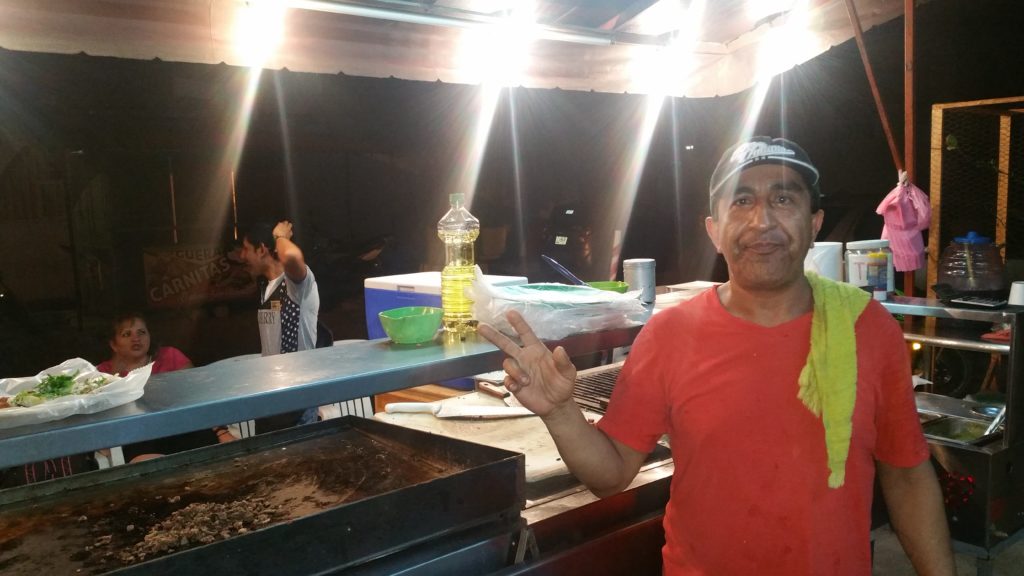
To where have you traced the birth of the taco? And what about the origin of the word itself?
The origins of the taco are really unknown. My theory is that it dates from the 18th century and the silver mines in Mexico, because in those mines the word “taco” referred to the little charges they would use to excavate the
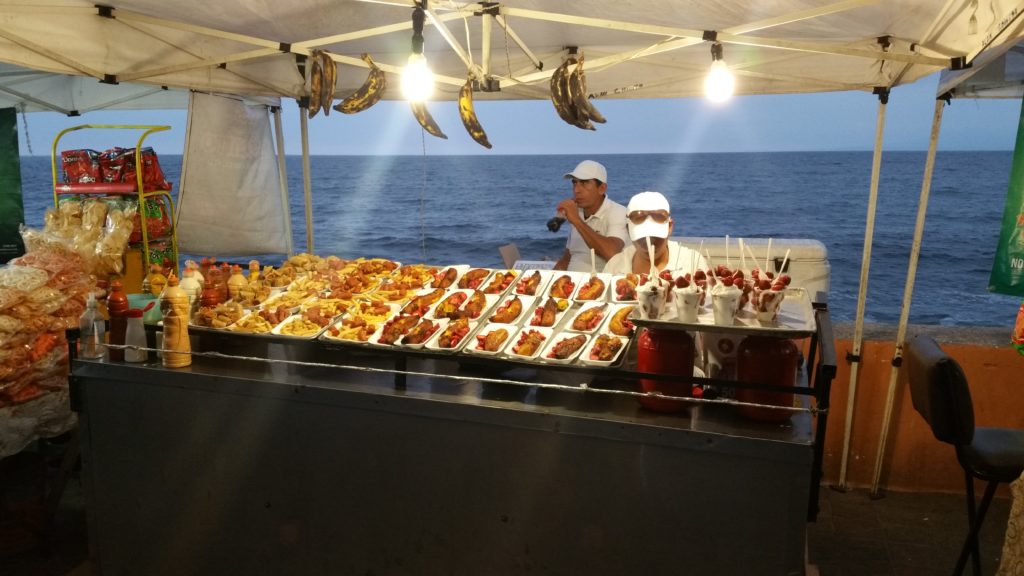 ore. These were pieces of paper that they would wrap around gunpowder and insert into the holes they carved in the rock face. When you think about it, a chicken taquito with a good hot sauce is really a lot like a stick of dynamite. The first references [to the taco] in any sort of archive or dictionary come from the end of the 19th century. And one of the first types of tacos described is called tacos de minero—miner’s tacos. So the taco is not necessarily this age-old cultural expression; it’s not a food that goes back to time immemorial.
ore. These were pieces of paper that they would wrap around gunpowder and insert into the holes they carved in the rock face. When you think about it, a chicken taquito with a good hot sauce is really a lot like a stick of dynamite. The first references [to the taco] in any sort of archive or dictionary come from the end of the 19th century. And one of the first types of tacos described is called tacos de minero—miner’s tacos. So the taco is not necessarily this age-old cultural expression; it’s not a food that goes back to time immemorial.
For a long time taquerías were in the working-class neighborhoods. Industrialization brought migrants from all over the country, and particularly women, to Mexico City because of light industry. Women brought with them their regional cooking skills. Every state, every region, every town has slightly different foods, so Mexico City was a bubbling stew where all these foods were available. People were able to sample a cosmopolitan world of dining that was not for the rich. This Mexican popular cuisine was the origin of what we think about as Mexican food.
And that Taco Bell thing….ug…don’t get me started. Yuck. I have a link to this article, like I always do, in the shownotes so go there and you read about Taco Bell and all that mess.
Types of Taco Stands in Puerto Vallarta, Mexico
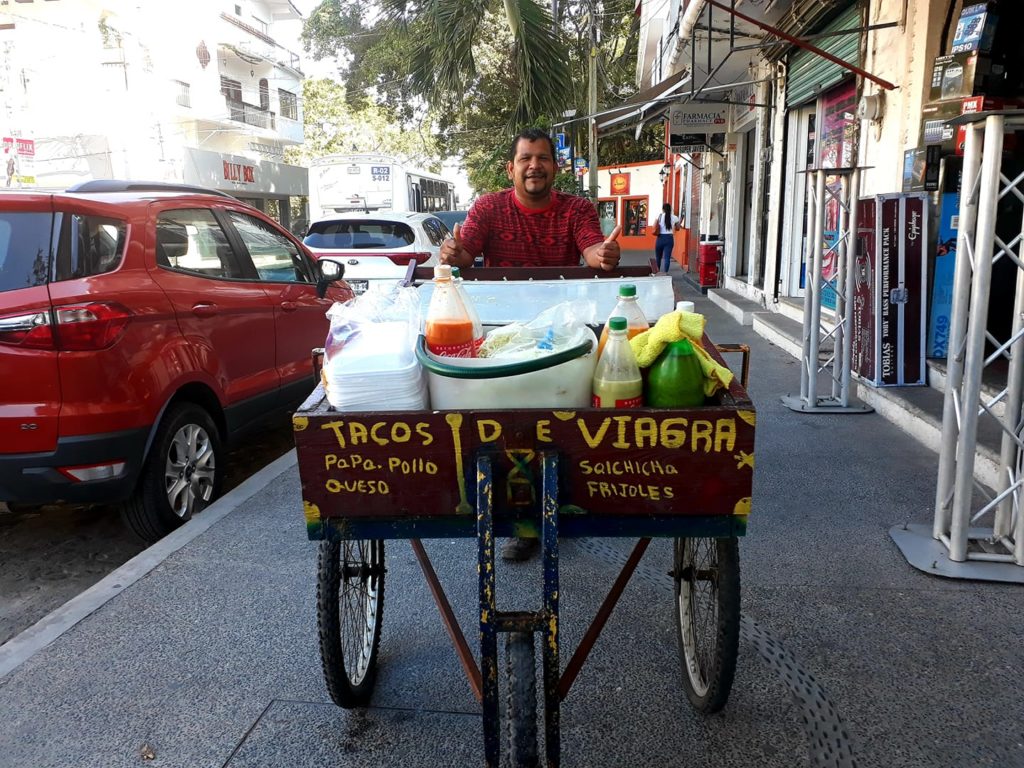
Previously we have visited a couple of taco stands on the show, Marsico’s Cisneros, Tino’s Taco Place El Banquito the smallest taqueria in town, Tacos El Cunado near the Los Muertos Pier, and you can listen to those interviews if you want to, and I will have links to them in the show notes. And by the way, JR has an extensive list of taco stands and a map showing where they are on his website, vallartainfo.com, and I have a link to that as well in the show notes.
Vallarta Info.com Taco Stand List and Map
Now over the years, wow, I can say that can’t I. Over the years on the Puerto Vallarta Travel Show we have had many guests speak lovingly about taco stands. So, I Thought that during this taco stand tour and I would slip in some clips between taqueria interviews from some more memorable interviews I’ve had about taco stands. So, you will be hearing from some of these people again Kind of Deja Vaux . One, I had a great conversation with Denise Emma at Kelly’s Pour Favor, which you may have already heard, where she talks about the taco stands. You will hear Conner Watts from Los Muertos Brewing, Memo Lira from Vallarta 101, Tierre Blouet from Café des Artistes and Mavi Graf from Arte Culinario all talking about their favorite taco stands In Puerto Vallarta. But the taqueria interviews you will hear on today’s podcast, I collected over a two day, well, two-night period, because that’s when all the action is taking place. And if you want to know if Puerto Vallarta is a safe place, I was out late recording these conversations, and in many cases, I was the only gringo in sight.
Some of my personal favorites we have already had on the show of course, El Banquito, Tino Perez’s place with tacos dorados 3 for 35 pesos, The stuffed jalapeno pepper taco, stuffed with seafood, breaded and deep fried and cut up in a tortilla is just to die for at Mariscos Cisneros, you have to try that for sure. I love Tacos El Cunados. We’ve heard from those. Then there’s other favorites I haven’t interviewed like Panchos’s tacos on Basillio Badillo, if you have time to wait in line, it’s worth the wait. El Taquito Hidalguense for lamb tacos in the cinco de dieiembre neighborhood, and for more seafood there is Marisma. They have the most wonderful fried fish mahi-mahi taco and the sauces and toppings there are fantastic! Those are just some of my favorites but honestly, I’ve never had a bad taco in paradise.
The key to a good taco is not just to filling, but the toppings and sauces. You will find the more popular stands have a large variety of items and condiments.
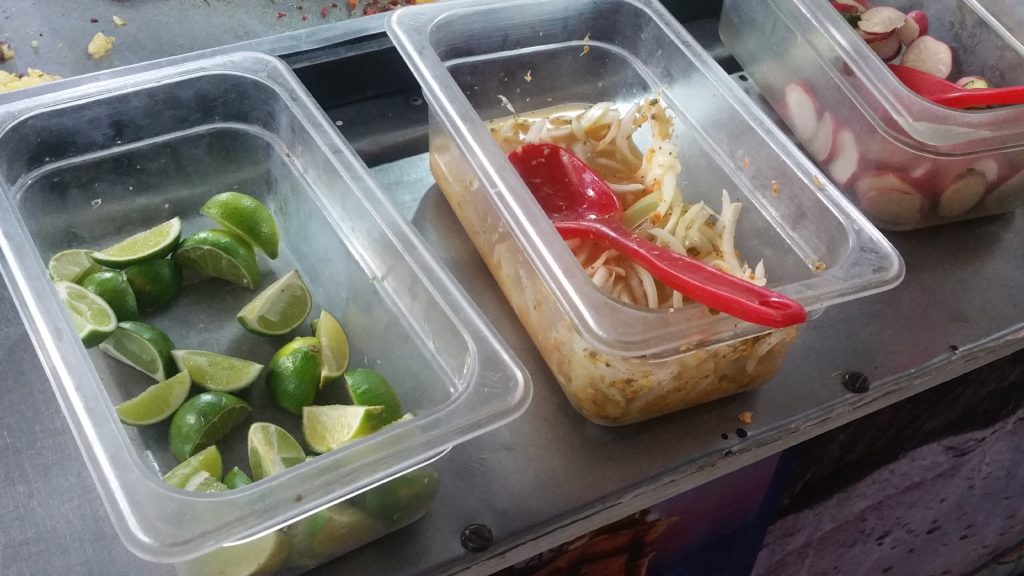
So, what do Mexicans put in tacos. Here are a few of the most common taco fillings that you may find at a Puerto Vallarta Taco stand.
Carnitas is, when it’s done right is slow roasted shredded pork shoulder that is kind of crispy because the meat, crisps up from the fat in the port shoulder. The particular cut of Pork is fatty. Real healthy…not…but I love carnitas.
Tacos al Pastor is pork thin sliced, marinated pork shoulder, about a ¼ inch thick or 1 centimeter , then it’s transferred to a large dish or bowl. In another bowl add achiote paste, chili powder, garlic powder, oregano, cumin, salt, pepper, vinegar, and pineapple juice. Smash it all up and stir it until smooth with no lumps. Then pour the marinade over the pork slices, then toss to make sure they are coated on all sides. Cover the bowl with plastic wrap, then refrigerate for at least 2 hours or up to 3 days. Then it’s piled high on a stake or skewer, Called a trompo, and the meat kind of takes on a cone shape, on top of the skewer, they place a pineapple, and then the skewer or trompo is set in a rotisserie contraption standing it straight upright, and rotating it alongside the flame, or heating element on one side, kind of like a salamander or broiler if you know what that is, and as the stake or trompo, spins slowly, the outside portion of the stack of marinated thin sliced pork, becomes cooked and browned, and in time, the
asadero with his sharp knife, will trim off the cooked outer portion of the stack, and the meat falls into a corn tortilla held in the hand of the asadero. When he has loaded the tortilla with meat, he will cut off a slice of pineapple from the top of the stake, which is captured as it fly’s through the air, by the artful wielder of the sharp blade. It’s an art, and I can watch these guys for hours I tell you. Everybody in town says they have the best al pastor. There are a lot of them out there I’ll tell you.
https://tasty.co/recipe/mexican-style-pork-tacos-tacos-al-pastor
Carne Asada is made from beef. The cut of beef you use should be flavorful, but it doesn’t need to be tender. Carne asada is usually made from skirt steak but can be made from flank steak, sirloin flap meat, or even trimmed brisket cut into 1-inch thick “steaks” and then again into thin strips.
A good marinade for carne asada will have lime juice, garlic, onion, and black pepper. Other fruit juices work great as well—especially papaya, which is a powerful natural tenderizer. You can add hot peppers to the marinade if you want.
When you get ready to grill, you will want to have salt on hand. Use a good coarse salt and add a little cumin, powdered garlic, chili powder, and whatever else you like. Then grill it.
After cooking, make sure after it has rested, in other words, sits for a couple minutes after it comes off the grill, you slice it against the grain. Add it to a corn tortilla and top with your favorite toppings like onions, cilantro, salsa and whatever else the taco stand has for toppings.
Some terms you will be hearing as well are cuts of meat. Tacos de res are beef. Tacos de asada, The same. There are tacos de Pollo, or chicken, chorizo or Mexican sausage, Tripa, or tripe, There’s cordero or Lamb tacos, Borrego or goat tacos, tacos de Cabeza or head, Lingua or tongue Pescado or fish, camerones or shrimp. Pulpo is octopus, huchinango is red snapper, and atun or tuna. You will be hearing these terms from our Spanish speaking friends In the taco stands.
There are places that serve other crazy stuff like crickets and grasshoppers, and they do it on purpose, the bugs don’t just wander into the taco, at least we hope they don’t.
There are vegi tacos too.
Preparing the corn tortilla for a taco, a soft taco, is also an art. The tortilla is slightly dipped in a little lard, usually just on one edge of the tortilla, then it’s placed on the grill and they spin it al little to spread the liquid lard or oil on the entire side of the tortilla, then it’s flipped over to complete the chore, keeping the tortilla soft, yet, durable enough so they don’t fall apart while you are holding them and eating them.
Tacos dorados are hard shell tacos. It’s roughly what the name suggests: deep-fried tacos. But, aside the deep-frying, there’s an important difference between normal tacos and tacos dorados: the vegetables and other dressings are poured on the closed tacos as opposed to being a filling. Usually, the filling is just shredded meat or chicken.
Taco stands make other things besides tacos of course, There are quesadillas, Taquitos, Volcanes or Vampiros, baked potatoes, ceviche, sweet potatoes or camotes, and in Vallarta, tacos de Viagra! Joking. I have a picture of the taco de Viagra man in the shownotes that Javier Nino shared with me.
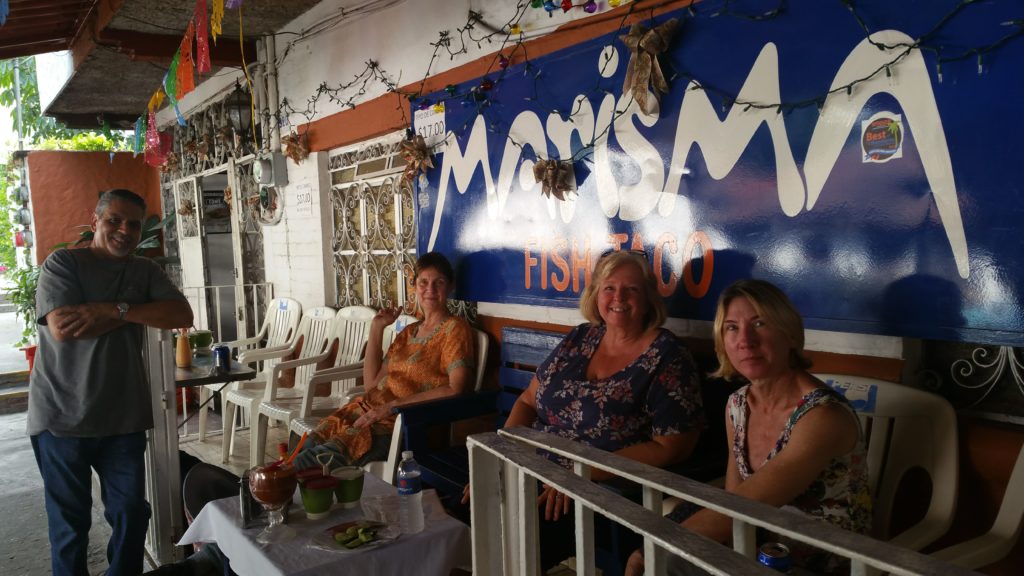
Tacos de Alambras are a popular Mexican dish consisting of grilled beef topped with chopped bacon, bell
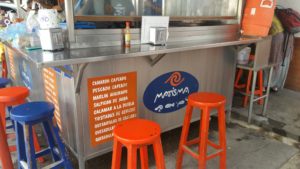
peppers, onions, cheese, salsa and, in some variations, avocado. It is usually served with freshly made corn or flour tortillas. The most common ingredient is beef, and other kinds of meat such as chicken or pork are also used. Some recipes even substitute chopped ham or chorizo instead of the bacon. Alambres are popular in many parts of Mexico, especially in Mexico City, Oaxaca, and among Mexican-American populations across the United States.
Camotes are a pressure cooked sweet potato served individually to each customer. Traditionally the pressure cooked sweet potato is topped with condensed milk, seasoned with chili peppers, cinnamon, or strawberry jam. Camotes venders are distinctive because of the loud, highly noticeable, whistle created by the cart they cook the potatoes in.
At some of the taco stands like one of my favorites, El Carboncito, they serve baked potatoes papas reinas, stuffed with taco filling, salsa, cheese, just yummy too.
I wasn’t able to get to all of my favorite taco stands, so before I get to these conversations, I need to explain that, sorry, but most of them are in Spanish, but you will get the gist because I try to translate while I go along, but as you can imagine, most taco stand operators don’t speak English, although a few do, but now you can get a taste of the taco stand lingo.
Now there are some secrets to choosing a taco stand. Look for people eating! The number one determining factor is is it busy? Watch the way money is collected. Make sure the person taking the
pesos is not the same person that is making your taco. If it is, they need to be washing or using plastic gloves. I’ve seen that on a number of occasions.
You want to see the condiments property protected from the elements, covers up and such. It doesn’t hurt to have a water source to wash hands and many of them do have water containers attached to the cart like to wash your hands.
Those are really indicators as to the greatness of the taco to come out of the stand.
I’m not going to translate over the voices this time, It’s really not necessary. I asked each taquerias basically the same questions, how ,long have you been in business, what are they cooking, what is their specialty or do they make something different than everybody else, and what do you tell someone who is afraid to eat street food. To a person, they said that you shouldn’t be afraid to eat street food. Many people do, they have hundreds of customers who eat at their stands and if the food got them sick, they wouldn’t ever come back. They are like the restaurants. They need to keep it clean and safe to eat.
The first interview I did was the only one I did during the daytime. And it was with this guy who looked like, well, I had to do a double take, he looked like Barak Obama. Seriously. His name is Noel Hernandez Vasquez and just look at the shownotes and you are going to agree with me.

Map to Taqueria La Santa Cruz, Puerto Vallarta
I wandered down to the Cinco de Diciembre neighborhood one of the nights, and the second night I wandered up in the Emiliano Zapata neighborhood. Towards the last third of the interviews you will meet the three taco stands on Lazaro Cardenas alongside the farmacia Guadalajara. The first is the newest,
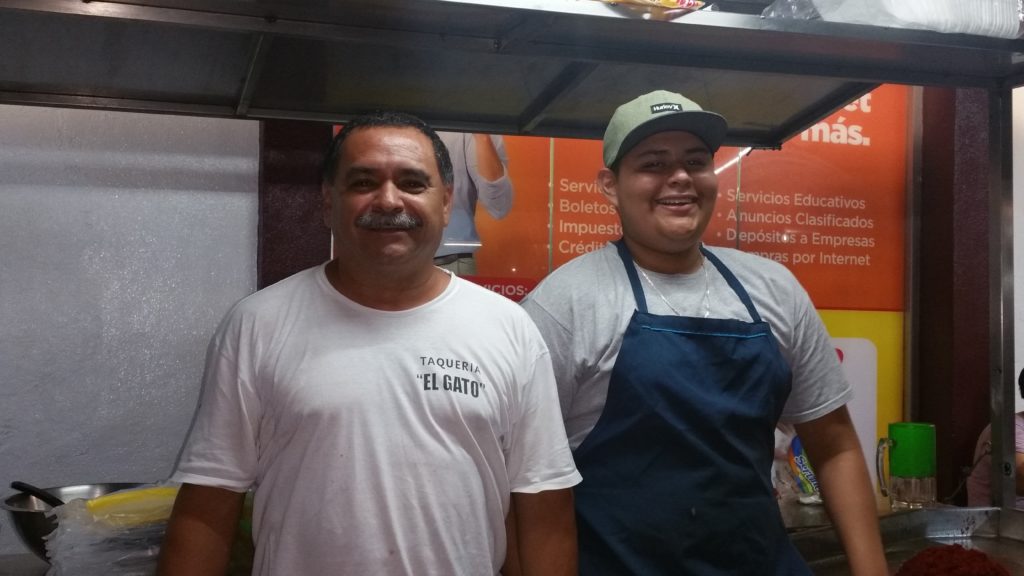
Map to Taqueria El Gato, Puerto Vallarta, Mexico
the farthest away from the corner of Insurgentes and Lazaro Cardenas named Tuito Taqueria, Then Taqueria La Hormiga is at the end, and Tacos Super Mendoza in the middle of the three. I recorded these
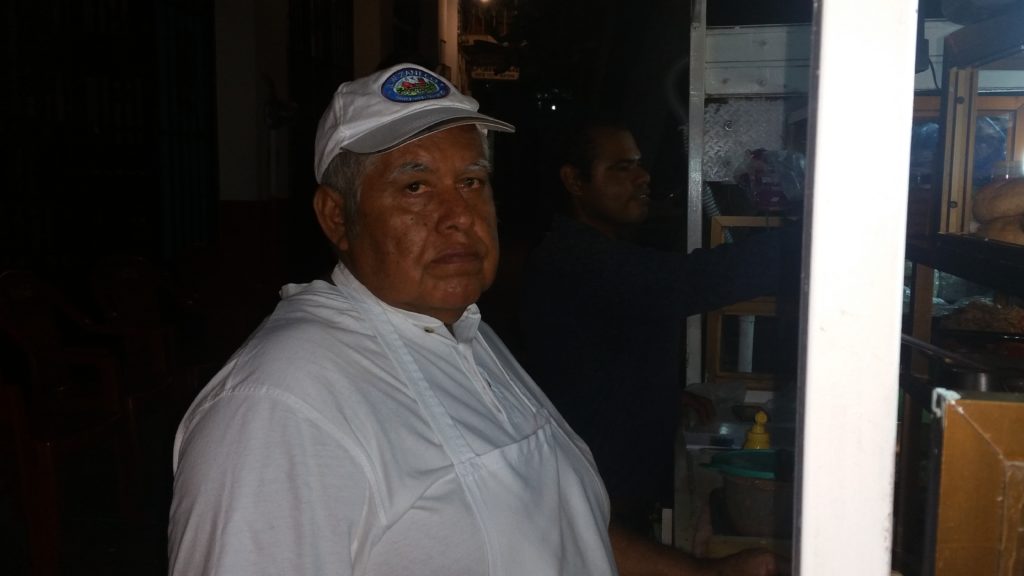
conversations almost a full year ago, so Tacos Super Mendoza is getting ready to celebrate 51 years next month. Okay, I’m done explaining. I tried to give you a little taste of the sounds as well as you sit at the taco stands in the street, with la gente. With the people.
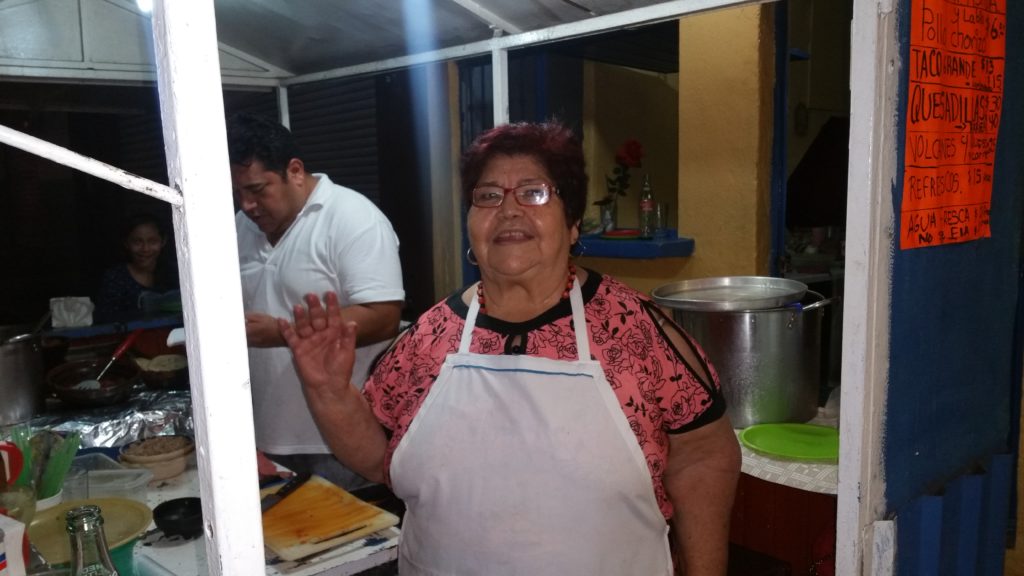
So, let’s go right now to the streets of Puerto Vallarta, and let’s meet the folks that really keep this town running, The taquerias, de Puerto Vallarta….
Listen To The Podcast
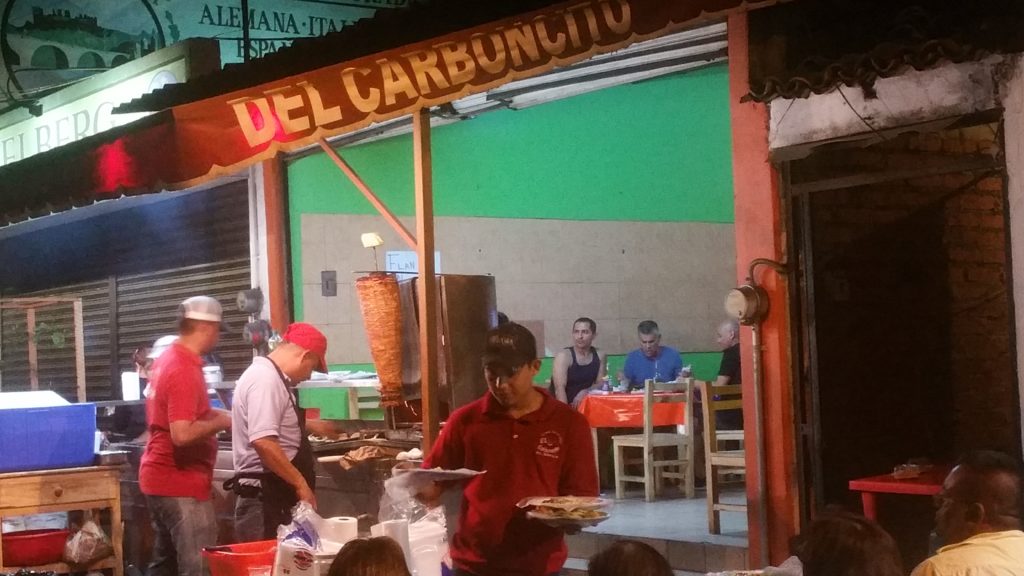
Contact for El Carboncito Puerto Vallarta
- Facebook: El Carboncito Facebook Link
- Phone: +52 322 181 0954
- Address: 129 Honduras
Map
Listen to The Podcast
I have pictures of all these nice people, and pictures of their stands and food and a map, to take you right to them. And you know where to find all that don’t you? That’s right, in the show notes to this episode of
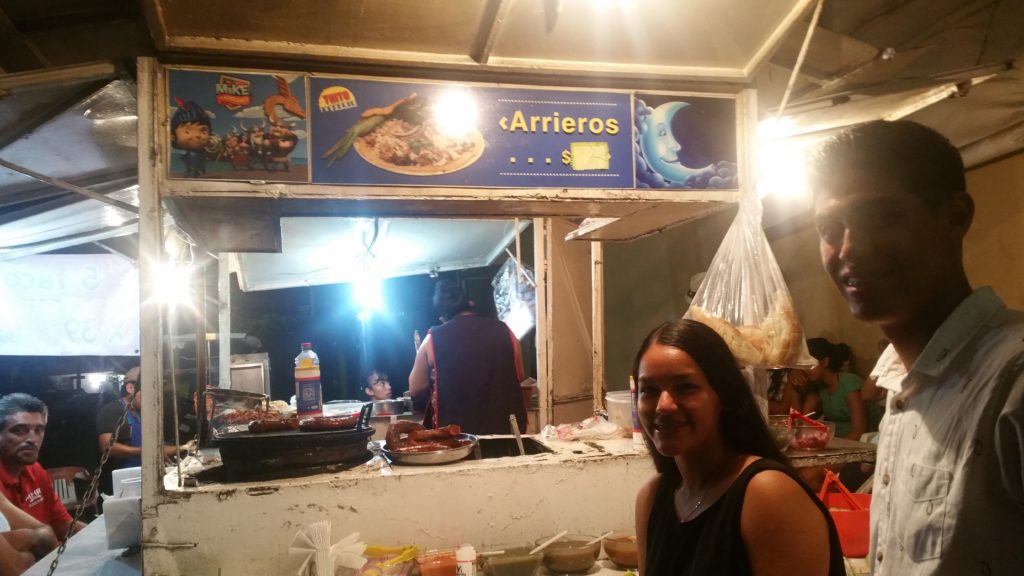
The Puerto Vallarta Travel Show. And the next time you come to town, make sure if you haven’t already, eat at, at least one taqueria. And make sure your hands are clean. Also, a frequent cause of illness when eating out. Your own hands right?
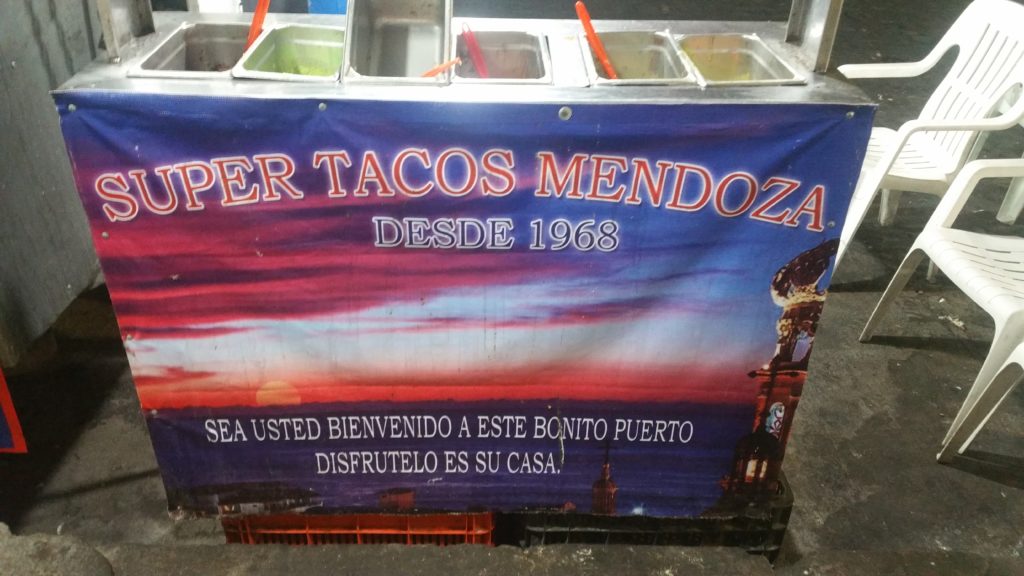
Contact for Tacos Super Mendoza
Facebook Page for Tacos Super Mendoza
Okay that should do it for this week.
Next week, stay tuned for more on the ground reports from Puerto Vallarta Mexico, with travel tips, great restaurant and excursion ideas and more. Until then, remember, this is an interactive show where I

depend on your questions and suggestions about all things Puerto Vallarta. If you think of something I should be talking about, please reach out to me by clicking on the Contact us tab and sending us your message.
And remember, if you are considering booking any type of tour while you are in Puerto Vallarta, you must go to Vallartainfo.com, JR’s website and reserve your tour through him, right from his website.
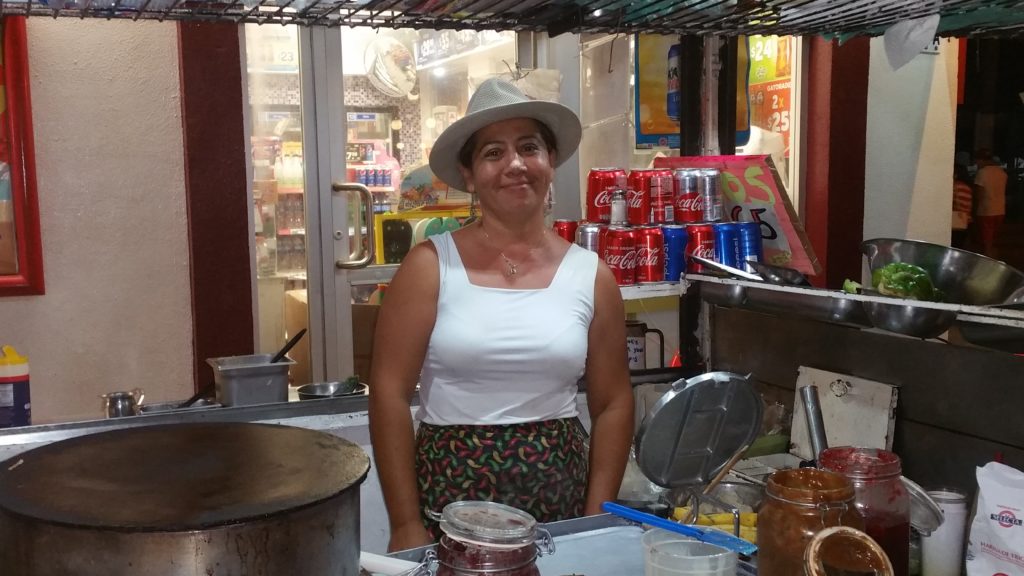
Contact Information for Taco Time Shrimp Burritos in Puerto Vallarta
Address: Calle Francisco I. Madero # 163
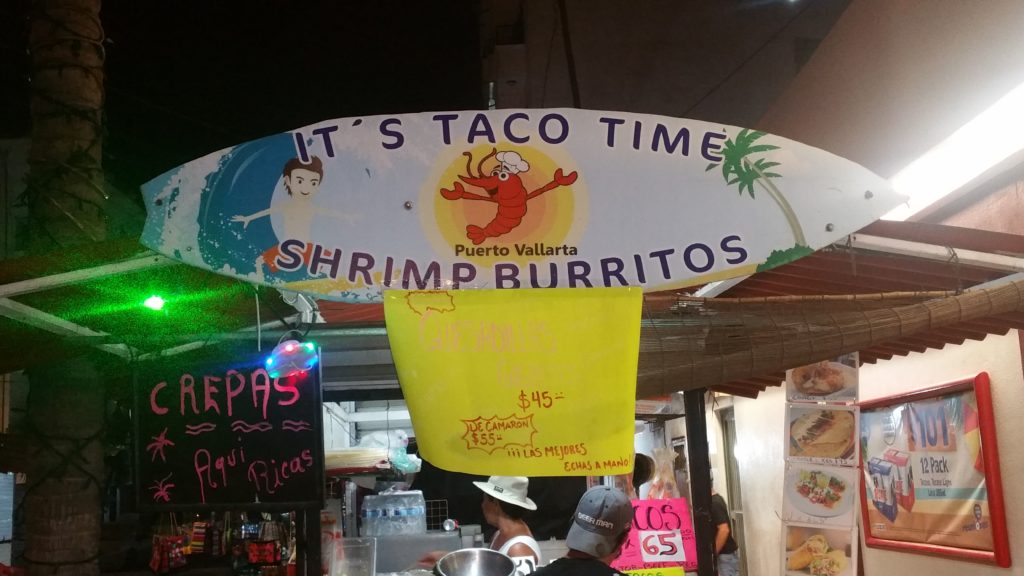
Remember the value for value proposition. His experience and on the ground knowledge of everything Puerto Vallarta in exchange for your making a purchase of a tour that you would do anyway, you’re just doing it through him as a way of saying thank you. It costs no more than if you were to use someone else
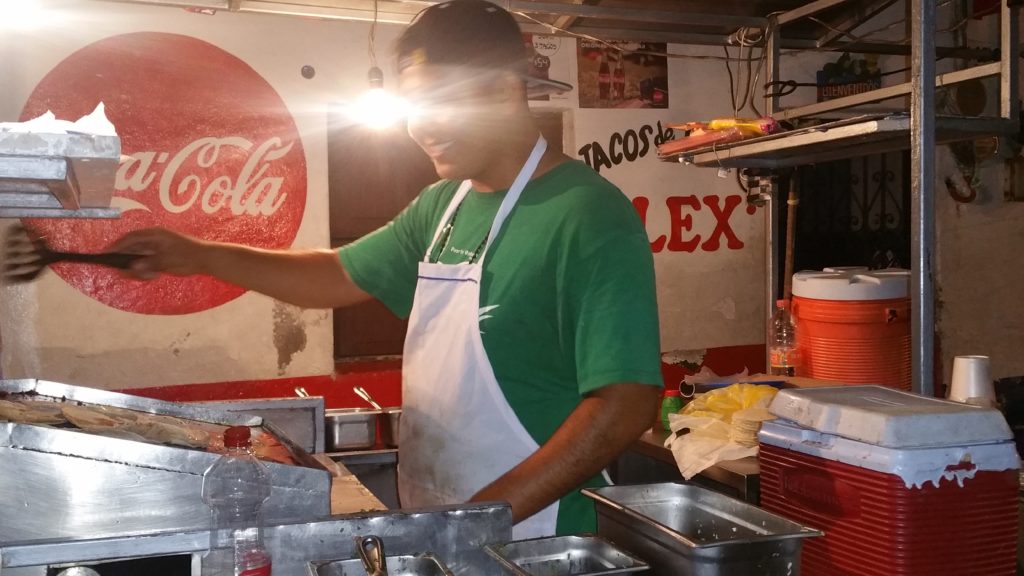
Map to Tacos de Birria Alex
so do it. Really. And when you do take one of these tours, email me about your experiences. Maybe you
can come on-board and share with others what you liked or didn’t like about the tour. Again, contact me by clicking on the Contact us tab and sending off a message. Don’t forget his maps, his DIY tours and his revitalized Happy Hour Board. I have links to all of those in the show notes.
And once again, if you like this podcast, please take the time and subscribe and give me a good review on iTunes if you would. That way we can get the word out to more and more people about the magic of this place. Puerto Vallarta, Mexico. Remember I made it easy for you to do just that with each episode I create. But if you haven’t been to my website, you really need to have a look there. I have the links to the places we talk about, interesting pictures and the more all right there in my blog-posts and show-notes for each episode of the show so check them out for sure if you haven’t already all-right? All right.
And thank you to all of you wonderful people, you taco masters of Vallarta, thanks for talking with me and being so friendly and welcoming and for keeping this town running, make sure you enjoy the greatness of a street taco or taco cart food while in paradise next trip. You will be thanking me.
And thanks to all of you for listening all the way through this episode of the Puerto Vallarta Travel Show. This is Barry Kessler signing off with a wish for you all to slow down, be kind and live the Vallarta lifestyle. Nos Vemos amigos!
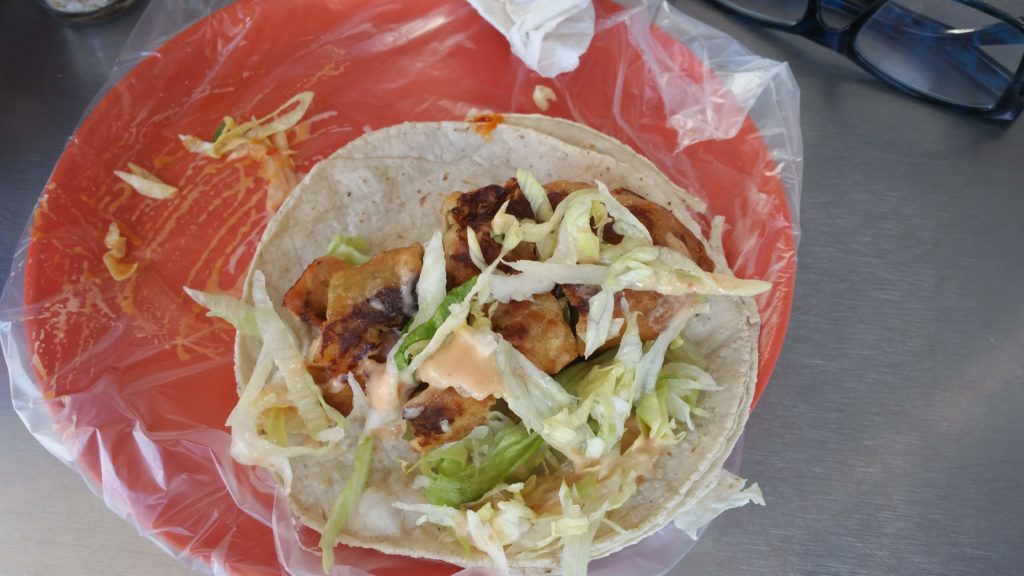
Listen to The Podcast

